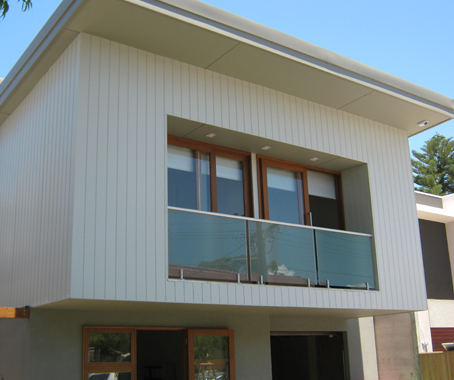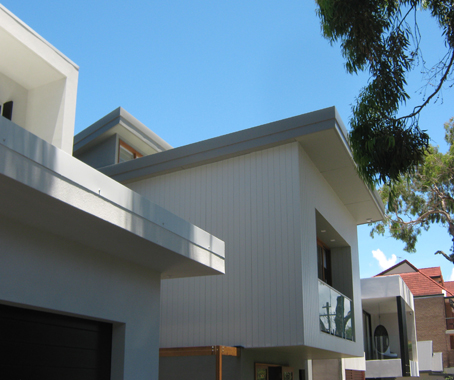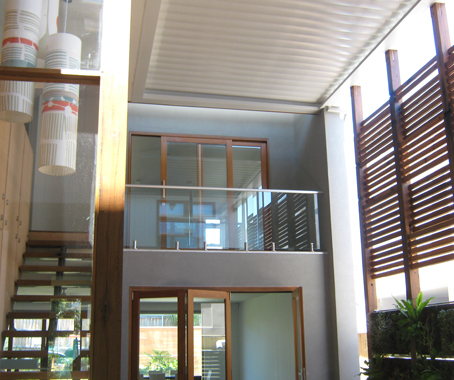Cameron Rosen’s sustainable house demonstrates how the right planning, materials and understanding can lead to sustainable living, writes Ola Bednarczuk.
December 8th, 2010
When you consider that building a house results in a product that may be around for another 50 to 100 years, you could well wonder why sustainability in residential building is still not on the agenda as much as it is in commercial building.
Australian Living’s Cameron Rosen puts this down to a lack of education in the wider community and the need for a change in attitude from the get-go.
“When you start to think less selfishly about what you’re creating, you start to understand that the impact of what you’re doing is not only related to the development site; it’s related to every product that you purchase and every place the material comes from,” says Rosen.
Rosen recently invited the public into his own house – part of his Eco-Challenge initiative, which set out to build 4 houses using eco-friendly products to achieve sustainable means – as part of the Short Black talks run by the Australian Architect Association (AAA).
Rosen’s house demonstrates how simple, well thought-out measures can easily achieve a sustainable building.

Thermal comfort through good insulation and good thermal mass, for example, was integral to the design process and is key to the house’s 8 star thermal comfort rating.
“When people complain that achieving higher star ratings is too expensive, it’s because they’re not designing the building well,” says Caroline Pidcock of Pidcock Architects, who designed the house. “It’s actually not that hard to make a well-designed building really efficient.”
Recycled and recyclable materials were sourced wherever possible, including wood from a torn-down truss bridge originally built by Percy Allan. Gyprock offcuts were saved and collected by supplier CSR for re-use in new materials.
A Ritek Wall System traditionally used for commercial high-rise buildings was used to avoid bricks, which are labour-intensive and energy-consuming.

The aims of the building process were to reduce waste, logistics and time taken. This in turn influenced the rest of the development, such as the home’s waste management system and permaculture.
As Rosen uses this project to spread the word about sustainability to the wider residential community, 2 factors will be key to its impact.
“It needs to be understood by the community and be a clear-cut passion for their own purpose,” says Rosen. “When they understand the core basics and the processes and planning necessary at the beginning, then they’ll accept it moreso.”
Also key will be the introduction of mandatory disclosure for energy efficiency in residential construction which, according to Pidcock, is coming.
“In Europe it has proven very persuasive in encouraging people to understand what they’re buying and then push for more efficient buildings. As architects we will need to understand that and make sure we’re future-proofing our places in the future to accommodate that.”

INDESIGN is on instagram
Follow @indesignlive
A searchable and comprehensive guide for specifying leading products and their suppliers
Keep up to date with the latest and greatest from our industry BFF's!

Gaggenau’s understated appliance fuses a carefully calibrated aesthetic of deliberate subtraction with an intuitive dynamism of culinary fluidity, unveiling a delightfully unrestricted spectrum of high-performing creativity.

XTRA celebrates the distinctive and unexpected work of Magis in their Singapore showroom.

Schneider Electric’s new range are making bulky outlets a thing of the past with the new UNICA X collection.

Within the intimate confines of compact living, where space is at a premium, efficiency is critical and dining out often trumps home cooking, Gaggenau’s 400 Series Culinary Drawer proves that limited space can, in fact, unlock unlimited culinary possibilities.
As of March 2012, designers, manufacturers and young professionals from all over the world are called upon to submit their latest and most creative designs to the red dot award: communication design. In 2011, over 6,468 works were submitted. This year, thousands of entries are once again expected. Only the best will be awarded the […]
Never before FAGERHULT’s Avion has light played with a space’s atmosphere so gracefully.
Ontera let Sydney designers flex their design muscles at a series of functions at Ventuno on the waterfront during October. Designers from across the city were invited to create unique and fabulous fashion accessories using a felt component incorporated into Ontera’s Envibond backing system. The results amazed the guest judges and Ontera team, showcasing the versatility of the product and the amazing creativity of Sydney’s designers.
The internet never sleeps! Here's the stuff you might have missed

Mountain Soil reimagines retail as an immersive, context-driven experience.

Redefining angularity of form as a welcoming architectural gesture, the multi-purpose learning hub at St Kevin’s College embraces the responsive geometry of light and shade to forge a profound connection with its urban locale.